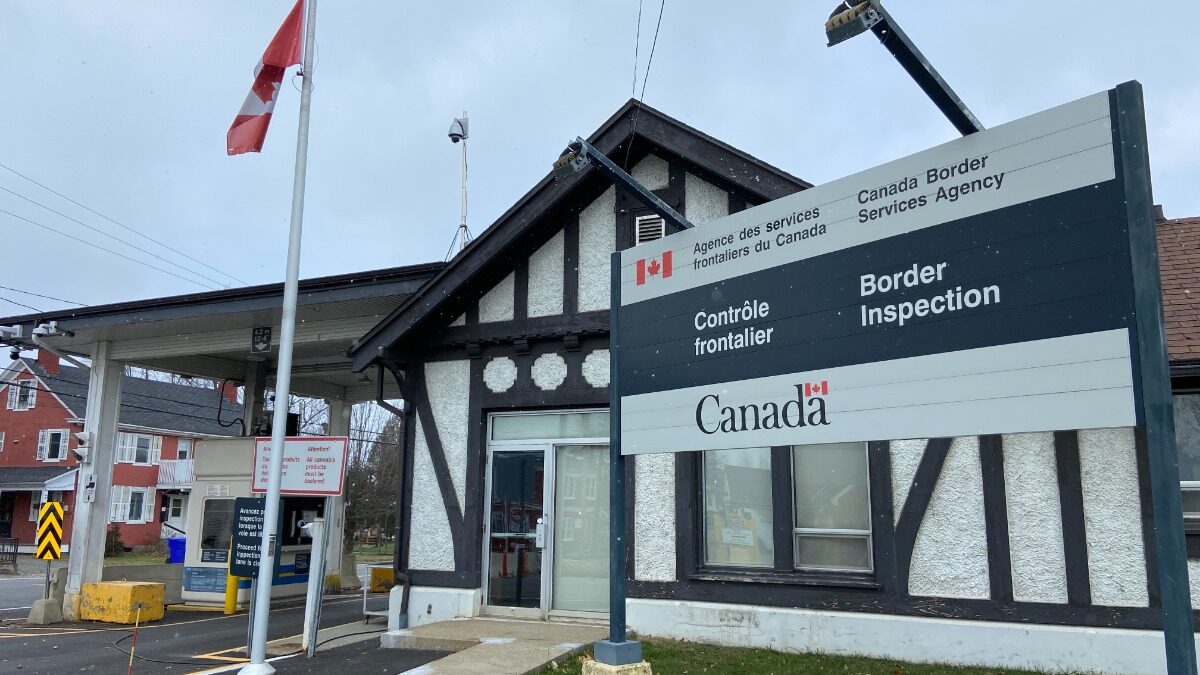Earlier in June, U.S. President Joe Biden announced measures on migrants who cross the U.S.-Mexico border that allow authorities to deport or turn them back to Mexico without having the chance to claim asylum.
One of Donald Trump’s main campaign agendas is to deport millions of undocumented migrants and prevent others from crossing borders.
In recent years, tensions over Quebec’s Roxham Road have risen because of the increase in people crossing the U.S.-Canada border seeking asylum in this country.
Migrants have been accused of being the cause of shortages of affordable housing, health care and jobs, as demands to control immigration have intensified.
In the midst of the rise of anti-immigrant sentiment, terms such as “illegal migrants” and “illegal crossing” are regularly used by public figures and media outlets.
Experts say politicians and journalists need to be careful when addressing immigration.
The illegal asylum seeker, that term does not exist and it should not exist. In international law, it is not illegal to be an asylum seeker. Your rights are protected no matter how you arrive in the country
Azadeh Tamjeedi, a senior legal officer with the United Nations High Commissioner for Refugees (UNHCR)
Using “illegal migrants” and “asylum seekers” interchangeably to describe those who cross borders seeking refuge is wrong, misleading and dehumanizing, a senior legal officer with the United Nations High Commissioner for Refugees (UNHCR) told Capital Current.
“The illegal asylum seeker, that term does not exist and it should not exist. In international law, it is not illegal to be an asylum seeker. Your rights are protected no matter how you arrive in the country,” Azadeh Tamjeedi said.
“We are seeing a little bit of a negative shift towards these populations, and a little bit of carelessness when it comes to the language that is used in the public to describe them,” she added.
According to Article 14 of the Universal Declaration of Human Rights, everyone has the right to seek asylum from persecution in other countries, unless it is “prosecutions genuinely arising from non-political crimes or from acts contrary to the purposes and principles of the United Nations.”
Article 31 of the 1951 Refugee Convention prohibits governments from penalizing refugees who enter or remain on their territories. It also forbids authorities from punishing asylum seekers for using smugglers to enter a country of refuge “illegally” although states have the right to punish the smugglers.
Canada’s Immigration and Refugee Protection Act ratifies the 1951 Refugee Convention. In other words, if crossing a border irregularly is done to claim asylum, it is not illegal.
The Convention defines a refugee as someone who “owing to well-founded fear of being persecuted for reasons of race, religion, nationality, membership of a particular social group or political opinion, is outside the country of [their] nationality and is unable or, owing to such fear, is unwilling to avail [themself] of the protection of that country; or who, not having a nationality and being outside the country of [their] former habitual residence, is unable or, owing to such fear, is unwilling to return to it.”
There were 424 refugee claims by irregular border crossers in the first quarter of 2024, according to the Immigration and Refugee Board.
Although it is significant to use the right terms to describe irregular asylum seekers, there are legal definitions for certain immigration statuses that need to be considered too.
“I think people misconstrue immigration and the legal definitions in Canada,” said Josh Schachnow, a Toronto immigration lawyer and CEO of Visto.ai
“They assume that a new immigrant means a new permanent resident which means a new person coming into Canada from outside the country. That is not the case.”
Schachnow said that when the federal government sets a target for the number of permanent residents, those people usually are inside the country and many likely have lived and worked in Canada for years.
Last November, the Liberal government announced the 2024-2026 Immigration Levels Plan, a plan to grant permanent residency to 485,000 people in 2024, a figure set to rise to 500,000 in 2025 and 2026.
Schachnow also pointed out that international students and visitors are not immigrants, adding that there are programs and processes for classifying each status.
“Until about two years ago, people loved the idea of international students, temporary foreign workers, skilled workers and permanent residents. All of a sudden, the flip is switched. And now it is just that immigration is bad. That is very dangerous,” he said.
“IRCC really needs to step up their game. Over the last few years, due to lack of regulation, lack of oversight, lack of enforcement, there’s been a lot of people misusing the program.”
I urge anybody who’s reporting on immigration, whether it be in the media or in politics, to do their best to use the proper legal terms
Josh Schachnow, Toronto immigration lawyer and CEO of Visto.ai
Ottawa announced a two-year cap on international student permits earlier this year with a stated goal of targeting institutional bad actors.
International students struggling with fraudulent acceptance letters provided by overseas agents have become prevalent in the last few years.
The IRCC will now verify documentation with universities and institutions before accepting student applications.
Schachnow said international students and immigrants should not be blamed for Canada’s systemic failures.
“I urge anybody who’s reporting on immigration, whether it be in the media or in politics, to do their best to use the proper legal terms,” he said
“People should understand that the immigration system is actually broken up into different segments and programs for very different reasons. Don’t just say that immigration is bad for Canada because it is not, and we will be in big trouble without it.”




